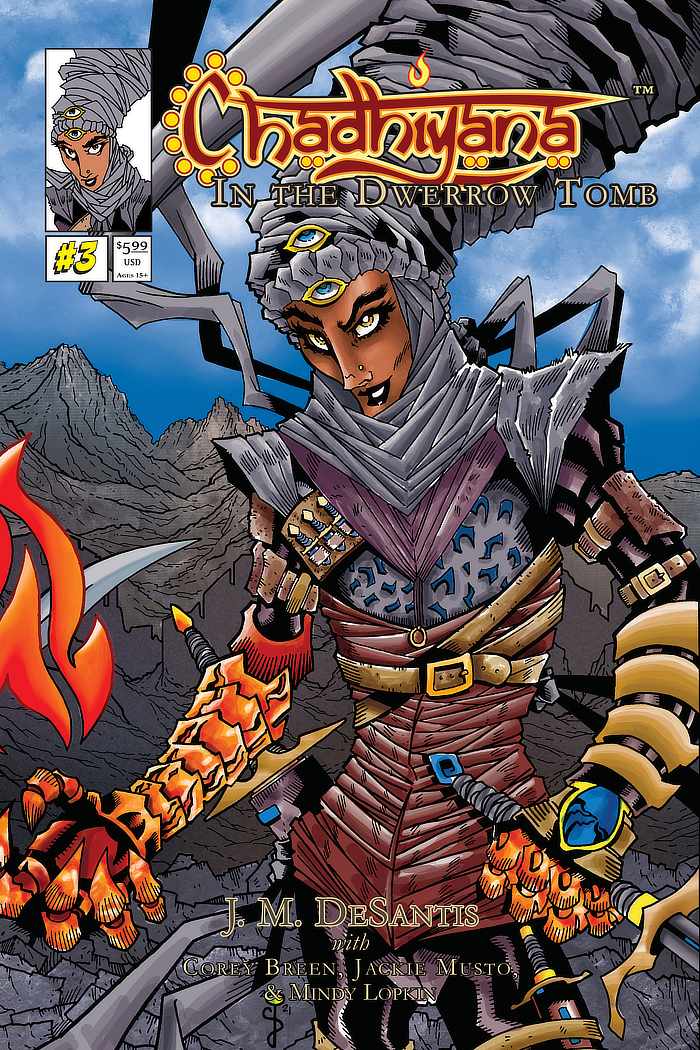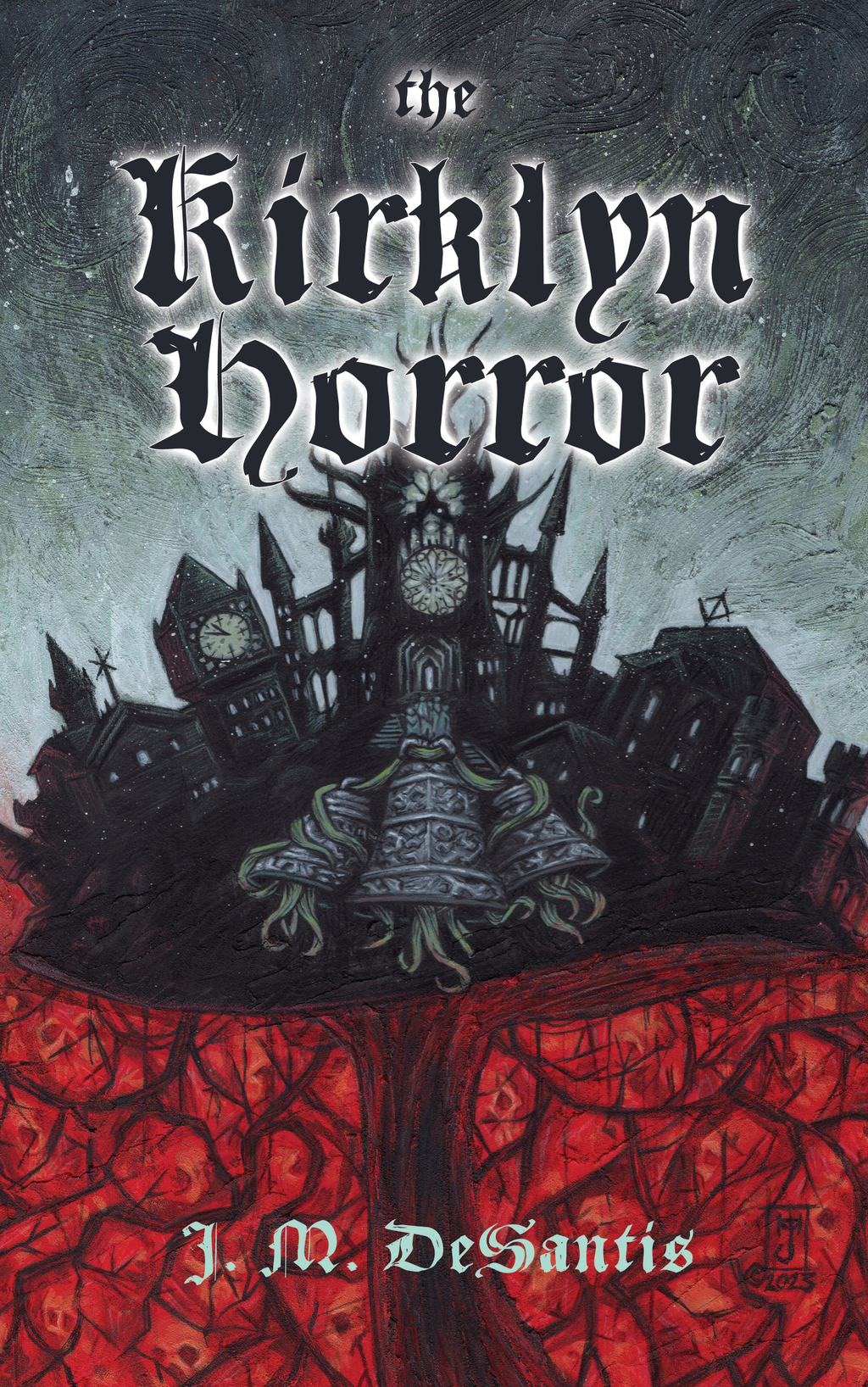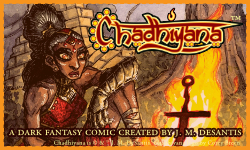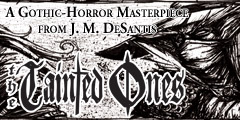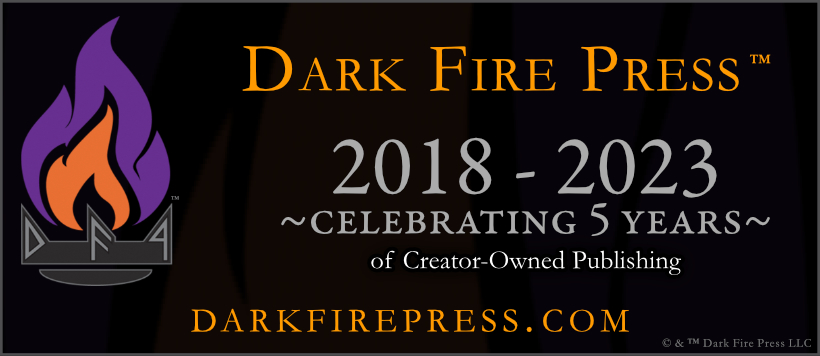Excerpt from
THE THING IN THE BOX
Published as a comic, with art by J. M. DeSantis, in Planet Lovecraft Magazine #4, June 2009.
PAGE ONE:
Panel 1. This panel being reserved for the title and credits of the story. It spans the whole width of the page, but is very thin, top to bottom.
Panel 2. We begin our tale by opening upon a lone, early twentieth century home, as seen from a distance. The hour is late, and the sky is dark. Deep shadows fall upon the house’s exterior, throwing it into nearly complete silhouette. Though, despite the hour, it is quite obvious that some one at least is awake, for one of the windows there is lit as though by candle light.
Panel 3. Here in panel three we are introduced to our narrator and protagonist (nameless here, forevermore). He sits at a desk in his study, reading a letter by the light of a candle standing upon his desk. Other than this, there is no other light to illuminate the room. Much of the study goes unseen in the darkness, adding to the feeling of mystery and hidden, unnamable things. Though, that is not to say the candle’s flame is not sufficient to cast some light upon at least a few of the objects within the room. Indeed, by it may be seen a great bookcase stacked full of volumes of all sorts and sizes, and shelves lined with other odd bits of things. On the wall behind the narrator can be vaguely glimpsed the mounted head of an animal – most specifically a lion (here representing Lovecraft’s Zodiac sign, Leo), and also the stone surface of a marble bust of Howard Phillips Lovecraft himself. Most importantly of all, however (the significance of which will soon become apparent) are a small, framed photograph which we cannot yet see the details of, and a yet unidentifiable miniature bust of an Egyptian pharaoh.
As per the narrator’s physical description itself, he is very much a man of his times, and that being specifically 1926 (as the narrator will very soon state). He wears a suit and tie, with vest, though his jacket has been removed in favor of comfort. On his face he wears a pair of spectacles and has no facial hair. The age of the narrator is not too specific, being somewhere betwixt his late twenties and early thirties.
NARRATOR (all of the narrator’s dialogue is in captions, but here labeled ‘Narrator’ for the purpose of identifying the speaker):
‘It was in the summer of 1926 that I received an urgent, however brief, letter from my uncle to the effect that he was sending to me a package which would require my immediate attention upon arrival.’
Panel 4. A closer shot of our narrator as he continues to read the letter in his hands. His face is nearly expressionless, despite, what may seem to us, the unusual contents of the letter. If anything, he reads with stern interest, but nothing more.
NARRATOR:
‘What’s more, it expressed in the strictest terms that I was to do nothing with the aforementioned package, including and specifically open it, until I had thoroughly read the accompanying letter.’
Panel 5. Over the shoulder of our narrator as he places the letter upon the desk. Just to the side of him we now see the previously mentioned photograph, though still not entirely clearly as we are yet a considerable distance from it. All that we may see is that in it is pictured the suited aspect of an older and mustached gentlemen.
NARRATOR:
‘Strange though it may seem, in this I found nothing out of the ordinary, for it was his wont to do such things.’
Panel 6. A close up of the photograph itself. Here we see clearly for the first time the uncle of our narrator. He is, as may be guessed and was briefly described before, considerably older than the narrator, being middle aged, and he wears a mustache upon his face and a suit upon his body. The man pictured is seated in a chair and in the background of the photograph are the shadowy shapes of various strange artefacts of many different bygone civilisations.
NARRATOR:
‘As it was, my uncle was an historian and archeologist, and, unlike many of his colleagues, preferred to unravel the mysteries of various ancient cultures first hand, rather than studying them from afar in libraries and laboratories alike.’
PAGE TWO:
Panel 1. Looking up from the letter, the narrator gazes about his study.
NARRATOR:
‘He loved perhaps more than anything else to walk upon the very earth of the ancients, to breathe their air and to hold the things they kept. There was to him no greater experience to have for one of his profession, and so he was given to travel often.’
Panel 2. From the narrator’s perspective, we may vaguely see more of the room in which he sits. Upon a great many shelves are placed a number of books and artefacts thrown into deep shadows by the faintly flickering light. Their titles and likenesses speak of the various cultures his uncle was like to have visited and studied. Here a volume of a Greek philosopher, there a painted African mask. Though all of them of cultures known to have existed. Yet amongst these things are (separate from one another) also a bust of the Magna Mater, Cybele, and a picture (perhaps not entirely seen, being partly cropped by the panel’s border), labeled, of the unutterable, Nyarlathotep.
NARRATOR:
‘That said it was not unlike my uncle to acquire some artefact of a bygone time to be added to his personal collection. And given the, at times, lengthy sojourns he was wont to take, very often it was his practice to send these things ahead of himself, both for safe keeping and that I might have the pleasure of viewing them, ere they were locked away in his home or a museum somewhere the world over.’
Panel 3. The narrator now turns his gaze to an object standing upon his desk, placing his hand upon it affectionately. It is, as we see, the aforementioned miniature bust of the Egyptian pharaoh. More specifically, it is the carven head of Kephren.
NARRATOR:
‘Though, on occasion, and given my own amateur interest in such things, I was able to come into possession of a few rare objects of my own, though some of them at considerable cost.’
Panel 4. Standing from his chair, our narrator begins to put on his suit jacket.
NARRATOR:
‘This was all largely due to the fact that I was the one person my uncle trusted most in these matters, as we had ever been so close since I was a boy.’
Panel 5. Close up of the narrator’s hand as it lifts the candle from the table.
NARRATOR:
‘Verily now I looked anxiously to know what new treasure he might be sending to me.’
Panel 6. The narrator now walks to the door of the study, his hand upon the doorknob. To his left stands an object clearly seen to be the representation of some ancient god. Its torso is that of an ancient Sumerian man, while its lower half is as the scaly body of a fish. Upon his head rests a crown fashioned in the likeness of some deep-sea creature. This is a statue of none other than the fish-god, Dagon himself.
NARRATOR:
‘At the time I knew him to be on an expedition of special importance.’
Panel 7. Close up of the face of the Dagon statue. Golden light spills upon its features to the right as the narrator moves beyond the door. Though, given the closeness of this panel, only the top left corner of the open doorway may be seen.
NARRATOR:
‘Though as to exactly where he was at current, he had been unusually secretive upon the matter.’
Panel 8. Same shot. The door now closed, the statue is given a sinister aspect by the deep shadows and faint, blue light which falls upon it.
…




